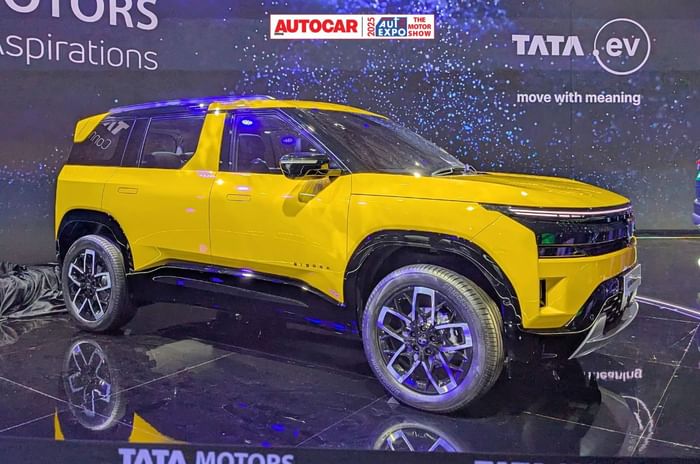At its latest Investors Day event held on Monday, Tata Motors has announced an aggressive product onslaught encompassing 30 new product updates by 2030. This includes lifecycle updates to existing models as well as seven all-new nameplates. By the end of this decade, Tata Motors is aiming to have as many as 15 different nameplates in its portfolio, up from the current 8.
This comes just as Hyundai, too, announced its own product onslaught for India comprising 26 models by 2030, with both carmakers (along with Mahindra) vying for the position of the number two carmaker in India.
- Tata Motors to have seven all-new nameplates by 2030
- New nameplates will be spread across both ICE and EV divisions
- Tata to invest up to Rs 35,000 crore between 2026 and 2030 in PV business
Tata announces new investment for PV business
Company is facing tough competition from Hyundai, Mahindra
Tata Motors has announced that it will invest Rs 33,000-35,000 crore between the financial year 2026 and 2030 in the passenger vehicle business, including its EV business. The company noted that the investment will be focused at expanding the product portfolio with software-defined vehicles (SDVs) and next-generation powertrains.
After four years of strong performance, Tata Motors saw a dip in volume and market share in FY2025, thanks to growing competition from homegrown rival, Mahindra. Even in the EV segment, Tata’s early lead of 80-85 percent market share from just two years ago has now fallen to about 55 percent. New product launches from Mahindra and especially MG has significantly eaten into Tata’s early mover advantage.
Sierra will be the first new nameplate from the upcoming product onslaught.
Speaking to our sister publication Autocar Professional, Shailesh Chandra, Tata Motors Passenger Vehicles MD, said, “In the short term, I expect some impact [in the EV market] but I’m not overly perturbed by it. My focus is on whether we’re preparing ourselves well for the long term. A lot of foundational work is underway to mainstream EVs. We’re focusing on micro-segments across different markets to sustain growth beyond the next 18–24 months.”
What are these upcoming seven all-new nameplates?
23 updates, 7 all-new models
Out of the 30 new product interventions planned all the up until 2030, 23 of them will be refreshes to existing models – this includes a next-generation of the Nexon, a facelift for ICE-powered Punch, and a new petrol engine for the Harrier and Safari, among others.
What’s more interesting are the seven all-new nameplates that are in the pipeline. We know one of these will be all-new Sierra that’ll debut in both ICE and EV iteration later this year. These will be followed by the Avinya range of EVs – previewed by the Avinya and Avinya X concepts – from 2027 onwards.
We are also going to see the production version of the Avinya X before 2030.
And while there’s not much info about the remaining four – two new EVs and two new ICE models – sources say that these will be bookended at both ends of the market. So, there could be a new SUV positioned below the Nexon and parallel to the Punch. At the higher end, there could be another SUV positioned alongside the Harrier, perhaps with a coupe-ish profile. One thing is certain; all upcoming products will be an SUV in some form or shape.
Tata’s existing product portfolio doesn’t have obvious gaps, and most of them already have an EV equivalent. So, there will undoubtedly be some overlap with existing products, much like Maruti has in the entry-level segments.
Tata Motors aims for 20 percent market share by 2030
EVs could comprise 30 percent sales by 2030
Tata Motors is targeting a 16 percent market share (including EVs) by FY27, and further expanding to 18-20 percent within the subsequent two to three years. In its EV business, the company anticipates maintaining its leadership position, with electric vehicles projected to constitute 20 percent of its total passenger vehicle volumes by the end of FY27, rising further to 30 percent by FY30.
Tata’s rivals, however, aren’t staying still. Apart from Hyundai, Mahindra said last year that it is planning to launch 9 ICE-powered SUVs and 7 EVs by the end of this decade. Meanwhile, Maruti Suzuki is planning to expand its portfolio from 18 models to 27 models and plans an EV portfolio for four models by 2030. The competition among the top four carmakers is only going to get a lot fiercer.
Also See:
Harrier EV 4WD could account for 20 percent of model’s sales: Tata Motors
Mahindra XEV 9e Pack Three Select with 79kWh battery launch soon





